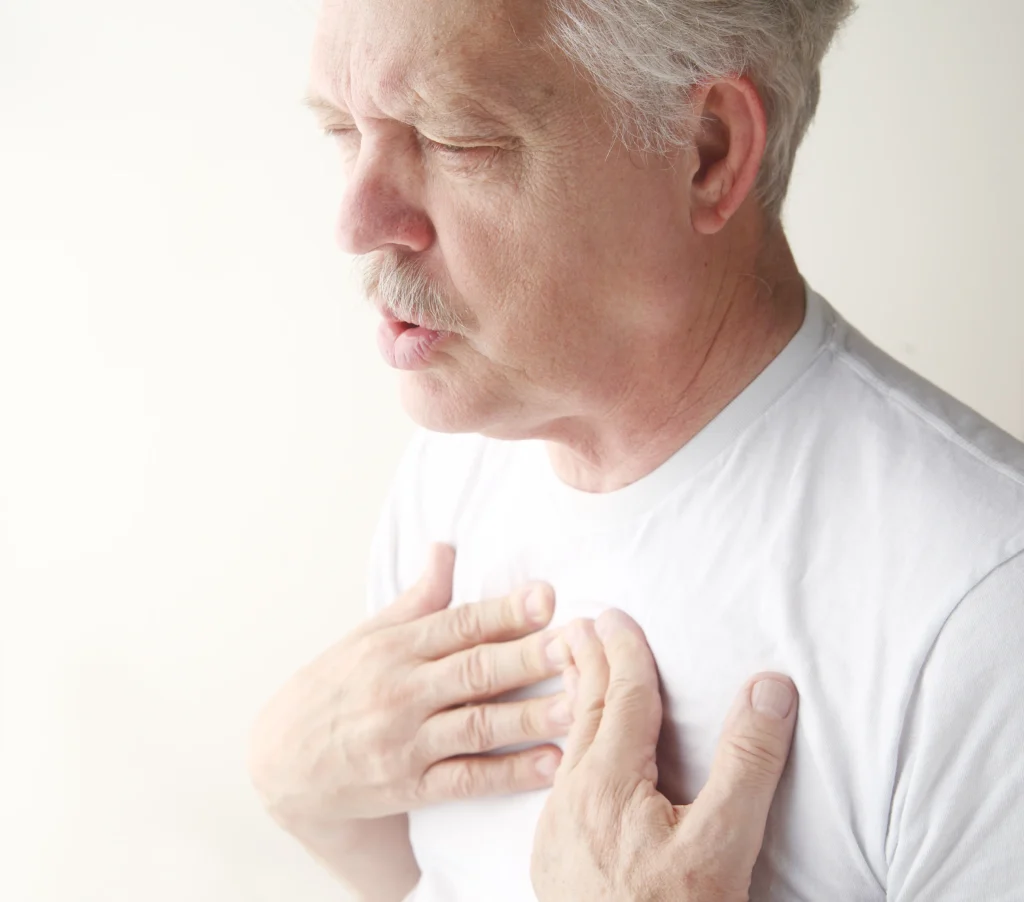
Breathing difficulty, also known as dyspnea, refers to the sensation of shortness of breath or trouble breathing. It can be caused by various factors, ranging from mild issues like a common cold or anxiety to serious medical conditions like asthma, heart disease, or lung disorders. If you or someone you know is experiencing persistent or severe difficulty breathing, it’s important to seek medical attention.
Common Causes of Breathing Difficulty
- Respiratory Conditions:
- Asthma: A chronic condition where the airways become inflamed and narrow, causing wheezing, coughing, and shortness of breath.
- Chronic Obstructive Pulmonary Disease (COPD): A progressive lung disease that includes chronic bronchitis and emphysema, leading to breathing difficulties, especially during physical activity.
- Pneumonia: An infection that inflames the air sacs in the lungs, which can cause difficulty breathing, fever, and chest pain.
- Pulmonary Embolism: A blockage in one of the pulmonary arteries in the lungs, often due to a blood clot, can cause sudden difficulty breathing and chest pain.
- Lung Cancer: Tumors in the lungs can cause coughing, wheezing, chest pain, and breathing problems.
- Sleep Apnea: A condition where breathing repeatedly stops and starts during sleep, often leading to daytime fatigue and difficulty breathing during sleep.
- Heart Conditions:
- Congestive Heart Failure (CHF): When the heart is unable to pump blood efficiently, fluid can build up in the lungs, causing shortness of breath, particularly when lying down.
- Heart Attack: If the heart’s blood supply is blocked, it can cause sudden difficulty breathing along with chest pain.
- Arrhythmia: Abnormal heart rhythms can lead to feelings of breathlessness and fatigue.
- Anxiety and Panic Attacks:
- Anxiety and panic attacks can trigger rapid, shallow breathing or the sensation of not being able to get enough air, which can feel like a serious breathing problem but is not caused by an underlying physical condition.
- Allergies:
- Severe allergic reactions (anaphylaxis) can cause swelling of the airways, leading to difficulty breathing. It often accompanies other symptoms like hives, swelling, or dizziness.
- Obesity:
- Excess weight can put pressure on the lungs and diaphragm, making it harder to breathe, especially during physical activity.
- Infections and Illnesses:
- Cold or flu: Viruses can cause congestion and inflammation in the airways, making breathing difficult.
- COVID-19: In severe cases, the COVID-19 virus can cause pneumonia, shortness of breath, and low oxygen levels.
- Environmental Factors:
- Pollution: Poor air quality, especially in urban areas, can irritate the airways and make breathing more difficult.
- Smoke: Inhaling smoke, whether from cigarettes, fires, or other sources, can irritate the lungs and cause difficulty breathing.
Symptoms to Watch For
- Shortness of breath: The sensation of not getting enough air or difficulty catching your breath.
- Wheezing: A high-pitched whistling sound while exhaling, often associated with asthma or COPD.
- Chest tightness: A feeling of pressure or squeezing in the chest.
- Rapid or shallow breathing: Breathing that is faster or shallower than normal.
- Coughing: Persistent coughing that may be dry or produce mucus.
- Bluish lips or face: Indicating a lack of oxygen in the blood (requires immediate medical attention).
When to Seek Medical Attention
You should seek immediate medical care if:
- You have sudden and severe difficulty breathing, especially if it’s associated with chest pain, dizziness, or confusion.
- You notice a bluish color around the lips or face (cyanosis), which indicates low oxygen levels.
- You experience shortness of breath while at rest or with minimal activity.
- The difficulty breathing comes with a high fever, wheezing, or coughing up blood.
Treatment for Breathing Difficulty
- Medications: These may include bronchodilators (inhalers for asthma), corticosteroids, or antibiotics (for infections).
- Oxygen Therapy: For individuals with low blood oxygen levels, supplemental oxygen may be necessary.
- Pulmonary Rehabilitation: For chronic conditions like COPD, a supervised program that includes exercise, education, and support can improve breathing.
- Lifestyle Changes: Quitting smoking, losing weight, and avoiding allergens or pollutants can improve respiratory health.
Managing Breathing Difficulty
- Breathing exercises: Techniques like pursed-lip breathing or diaphragmatic breathing can help reduce shortness of breath.
- Rest and hydration: Resting and drinking fluids can help ease symptoms if caused by a cold or mild illness.
- Avoid triggers: If your breathing difficulty is caused by allergies, asthma, or pollution, avoiding triggers can help manage symptoms


